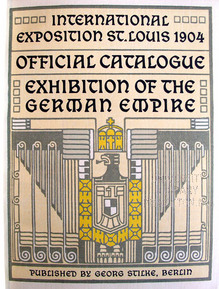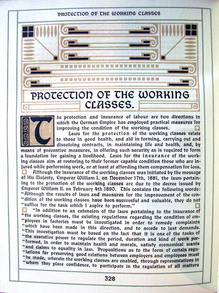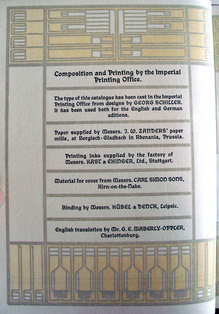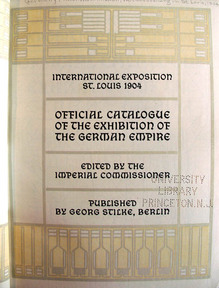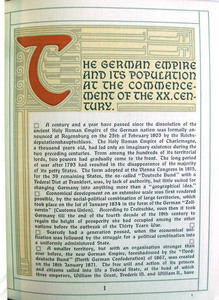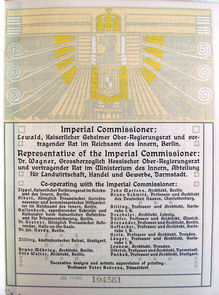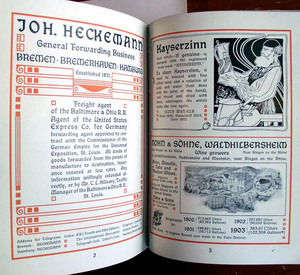German architect, painter, and typographer Peter Behrens (1868-1940) was a leading voice in development of modern German culture, designing monumental buildings as well as everyday commercial products. He was also a talented graphic designer.
As a member of the progressive Darmstadt Artists’ Colony, Behrens developed his architectural and industrial design aesthetic with sympathy to the arts and crafts movement but a definite modern view. Under his hand, geometric cubes and cylinders eventually replace the amorphic turn-of-the-century swirl. In 1902, Behrens was chosen to design the Jugendstil pavilion at the International Exhibition of Applied Art in Turin, receiving great acclaim. His aesthetic vision was now in demand. The next year he accepted the directorship of the Kunstgewerbeschule (School of Arts & Crafts) in Düsseldorf and began to spread his architectural theory to the next generation of artisans.
In 1904, sixty-two countries were invited to display their greatest industrial achievements at the St. Louis World’s Fair, converting the city into the “World’s University.” Behrens was the obvious choice to design Germany’s official catalogue, presenting the contemporary German aesthetic to the world. The credits on the title page verso are very specific: “Decorative designs and artistic supervision of printing, Professor Peter Behrens, Düsseldorf.”
Behrens went on to serve as artistic adviser to AEG (Allgemeine Elektricitäts Gesellschaft), one of the largest manufacturers in the world. He supervised the graphic design of catalogues, stationery, and typographic presentation while also designing electric fans, street lamps, and entire factories. Walter Gropius, Ludwig Mies van der Rohe, and Le Corbusier all worked under Behrens early in their careers and credit him as a major influence.
